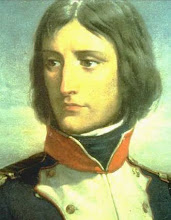Here are some of the questions I prepared from old N.C.E.R.T. textbook. I found questions from old NCERT given very much importance and stress for Kerala Entrance exams. I hope it will be useful for you.
1.An example of a cell devoid of nuclear membrane and mitochondira is a
(a) bacterial cell (b) protozoan cell (c) sponge cell (d) spewrm cell
Ans:a
2.Yellow colour of urine is due to?
(a)Urochrome
(b)Urigen
(c)Urophore
(d)Urinosin
Ans:a
3..As evident by radio-active isotope experiment the function of the nucleolus is
(a) Formation of spindle (b) Protein synthesis
(c) Gene control (d) Oxidation control
Ans:b
4.Study of animal behaviour is known as
(a) Entomology (b) Ornithology (c) Archeology (d) Ethology
Ans:d
5.Another name for 'Dictyosome':
(a) Golgi body (b) Ribosome (c) Lysosome (d) Mitochondria
Ans:a
6.Which organelle is associated with the digestive activities of the cell or rich in catabolic enzymes
(a) Ribosomes (b) Lysosomes (c) Peroxysomes (d) Kinetosome
Ans:b
7.Who coined the term hormone?
(a) G.W. Harris (b) Bayliss (c) W.M. Stanley (d) E.H. Sterling
Ans:d
8.The suffix "iedae" refers to
(a) Class (b) Order (c) Family (d) Genus
Ans:c
9.Mark the correct sequence
(a) Spermatogonia, spermatocytes, spermatids, sperms
(b) Spermatocytes, spermatogonia, spermatids, sperms
(c) Spermatogonia, spermatocytes, sperms, spermatids
(d) Spermatocytes, spermatids, spermatogonia, sperms
Ans:a
10.What will you call to the study of plant and animal tissue outside the body in a glass
tube?
(a) In-vivo (b) In-vitro (c) Ecdysis (d) In-vate
Ans:b
11.The ethnology is the study of
(a) Man kind behaviour (b) Past life of organisms
(c) Conditions of animals (d) Joints
Ans:a
12.Study of preservation of dead organisms in liquid by chemical method at low temperature is known as
(a) Urobiology (b) Chondrobiology (c) Karyobiology (d) Cryobiology
Ans:d
13.In spermatogenesis, the acrosome of the sperm is formed by
(a) Mitochondria (b) Nucleus (c) Golgi complex (d) Lysosomes
Ans:c
14.The diameter of DNA molecule is
(a) 20Å (b) 50Å (c) 100Å (d) 200Å
Ans:a
15.The plasma membrane of an animal cell is composed of
(a) Glycoproteins (b) Phospho-lipo-proteins
(c) Phosphoproteins (d) Lipoproteins
Ans:b
16.Protein synthesis is associated with or centre of protein synthesis is
(a) Ribosomes (b) Cell membrane (c) Nucleus (d) Chromatin
Ans:a
17.Moths and butterflies are closely related insects. Their study is known as
(a) Myremecology (b) Aracology (c) Lepidepteriology (d) Entomology
Ans:c
18.
Number of chromosomes of primary spermatocytes
(a) Is equal to that of spermatogonia
(b) Is equal to that of secondary spermatocyte
(c) Is half to that of spermatogonia
(d) Is half to that of secondary spermatocyte
Ans:a
19.Mitosis results in
(a) Reduction in number of chromosomes (b) duplication of chromosomes
(c) Increase in the cell volume (d) No change in number of chromosomes
Ans:d
20.The study of cause of disease is known as
(a) Pathology (b) Etiology (c) Ethology (d) Zymology
Ans:b
21.Linkage was established by
(a) Morgan (b) Bridges (c) Erick (d) Mendel
Ans:a
22.Which of the following is found only is RNA and not in DNA
(a) Adenine (b) Uracil (c) Cytosine (d) Guanine
Ans:b
23.Louis Pasteur is known for
(a) View for Biogenesis (b) Spontaneous generation
(c) Use and disuse of organs (d) Method of sterilization and germ theory of disease
Ans:d
24.How many types of bases are found in RNA?
(a) 2 kinds (b) 4 kinds (c) 5 kinds (d) 8 kinds
Ans:b
25.The study of development and evolution of animals is
(a) Zoogeny (b) Embrogeny (c) Embryology (d) Morphology
Ans:a
Subscribe to:
Post Comments (Atom)


No comments:
Post a Comment